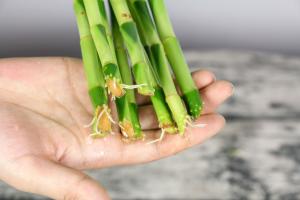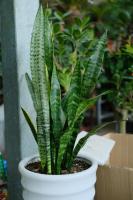How to Stake Full Grown Tomato Plants
Staking tomato plants is an essential step towards ensuring the health, growth, and productivity of your tomato garden. Full grown tomato plants can be quite heavy, and their branches may collapse under their own weight if left unsupported. Staking helps the plants to grow upright and improves air circulation around the foliage, reducing the risk of disease. In this article, we will discuss the steps involved in staking full grown tomato plants.
What you'll need:
Before we get started, here are the materials you'll need for staking your tomato plants:
Garden stakes or bamboo poles
Garden twine or soft ties
A hammer or mallet
Pruning shears or scissors
Step 1: Choose the right stakes
The first step in staking your tomato plants is to choose the right stakes. Garden stakes or bamboo poles are the most common materials used for staking. The stakes should be sturdy and tall enough to support your full grown tomato plants. The ideal height is around 6 feet, but this can vary depending on the variety of tomato plants you have.
Step 2: Drive the stakes in the ground
Once you have your stakes, the next step is to drive them into the ground. Using a hammer or mallet, drive the stakes into the ground around 6-8 inches deep and around 1-2 feet apart from each other. Make sure the stakes are firm and secure in the ground, as you don't want them to fall or lean over when the plants grow larger.
Step 3: Attach the twine to the stakes
After the stakes are installed, the next step is to attach the twine to the stakes. Garden twine or soft ties are good materials for this step. Start by tying a knot around one of the stakes, around 12 inches above the ground level. Then, stretch the twine to the next stake and wrap it around the stake once before tying another knot around it. Repeat this process until you have tied the twine at three or four points along the stakes.
Step 4: Support the tomato plants
Now it's time to support the tomato plants. You can do this by gently tying the stem of each plant to the twine using garden twine or soft ties. Start from the base of the plant and tie it loosely to the twine, making sure not to tie it too tightly around the stem to avoid damage. As the plant grows taller, you can add more twine above the stake to provide additional support.
Step 5: Trim the tomato plants
As your tomato plants grow, it's important to trim them to keep them healthy and productive. Use pruning shears or scissors to remove any yellow or brown leaves, and to prune the lower branches of the plant. This will improve air circulation around the foliage and reduce the risk of disease. You can also prune the main stem when it reaches the top of the stake to encourage the growth of lateral branches.
Conclusion
Staking full grown tomato plants is a simple but essential step towards ensuring your tomato garden is healthy and productive. By following these steps, you'll be able to support your plants and improve their growth and yield. With proper staking and pruning, you'll be able to enjoy a bountiful harvest of delicious homegrown tomatoes.

 how many times do yo...
how many times do yo... how many planted tre...
how many planted tre... how many pine trees ...
how many pine trees ... how many pecan trees...
how many pecan trees... how many plants comp...
how many plants comp... how many plants can ...
how many plants can ... how many plants and ...
how many plants and ... how many pepper plan...
how many pepper plan...






























